*Please take note this page looks best viewed on a desktop computer.
Anthropology, as I understand it, is the study of being and being with expansive, beautiful, and unequal worlds. I use the word ethnography to describe the practices I use to undertake that companionable work as well as my efforts to express it. Ethnography is fundamentally creative. It is always “in the making.” It is reflective, collaborative, and never finished.
This page contains some of my efforts to visually convey some of the experiences I’ve had and the truths I’ve learned in communities of humans and animals who live on and with the Atlantic Ocean. Crucially, it is not my goal to represent experiences—mine or others’—with these images. Experience can’t be pinned down like a butterfly or examined like a data set. Rather, with images and words I seek to evoke complex multi-species entanglements in ways that make viewers feel what is at stake on this swiftly changing planet—and for whom.
I was never trained as an artist. These multimedia experiments in watercolor, pen-and-ink drawings, digital, film, and cyanotype photography were my solutions to trying to develop the kind of anthropology I want to be a part of and believe to be an important part of imagining a more just world—together.


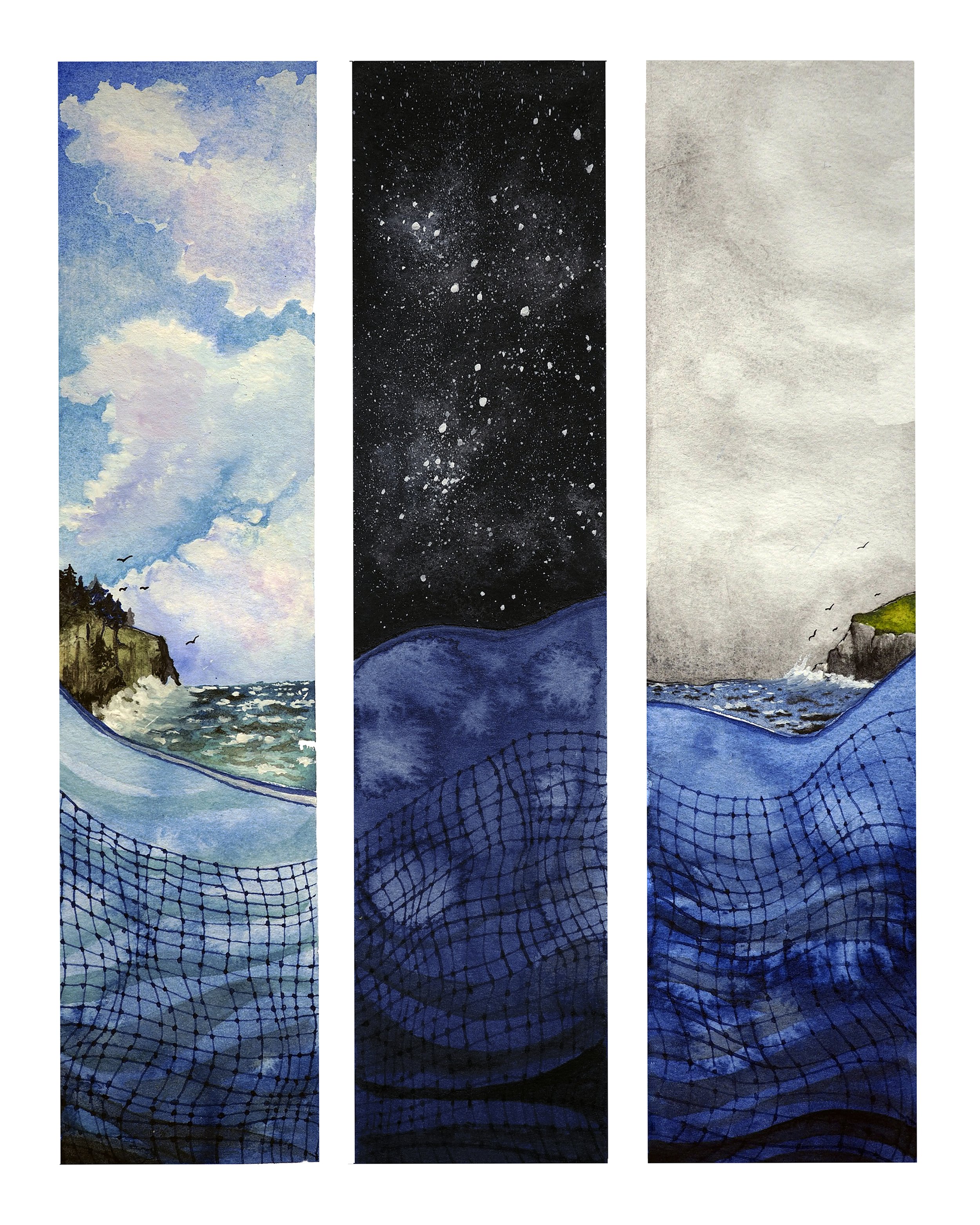

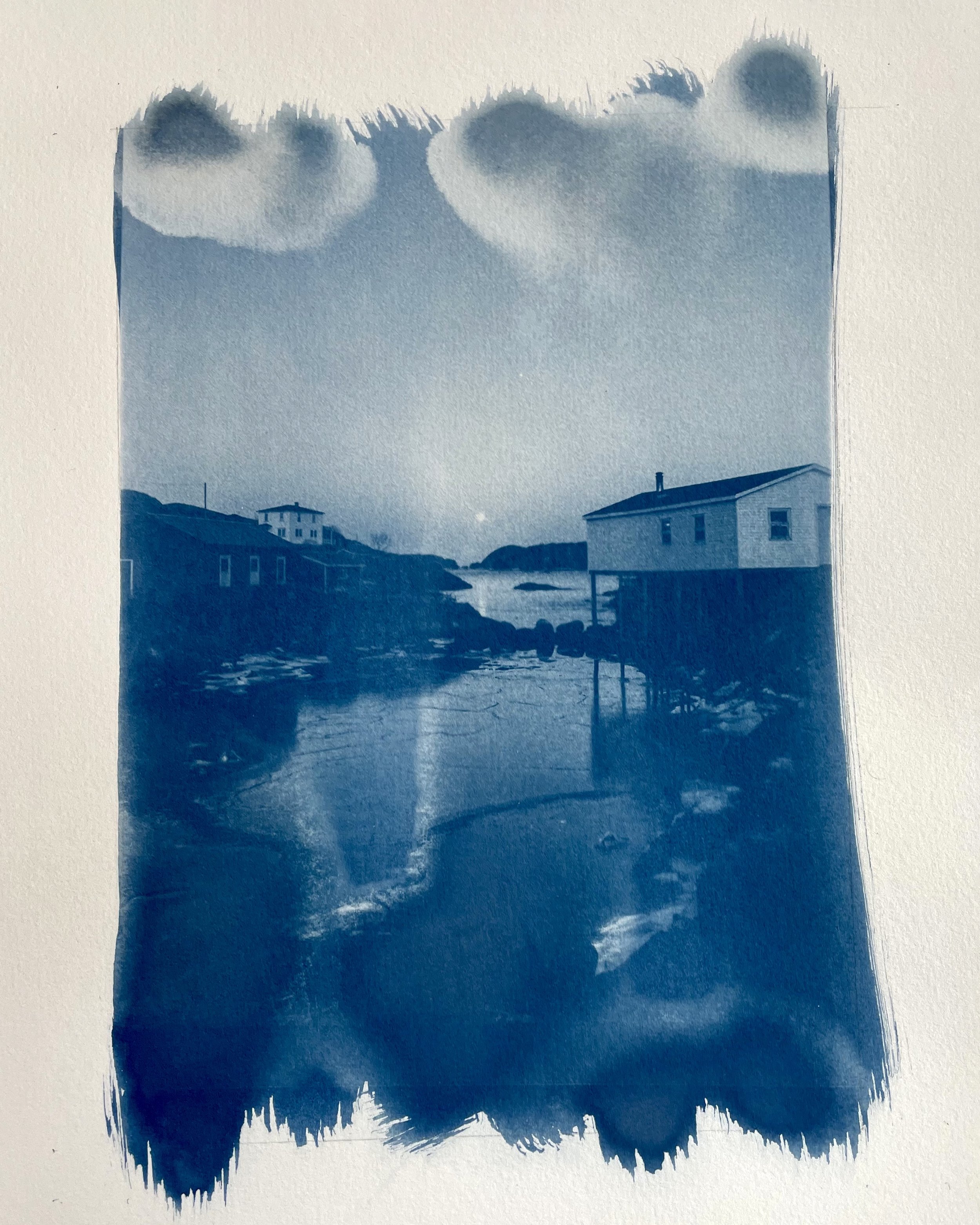
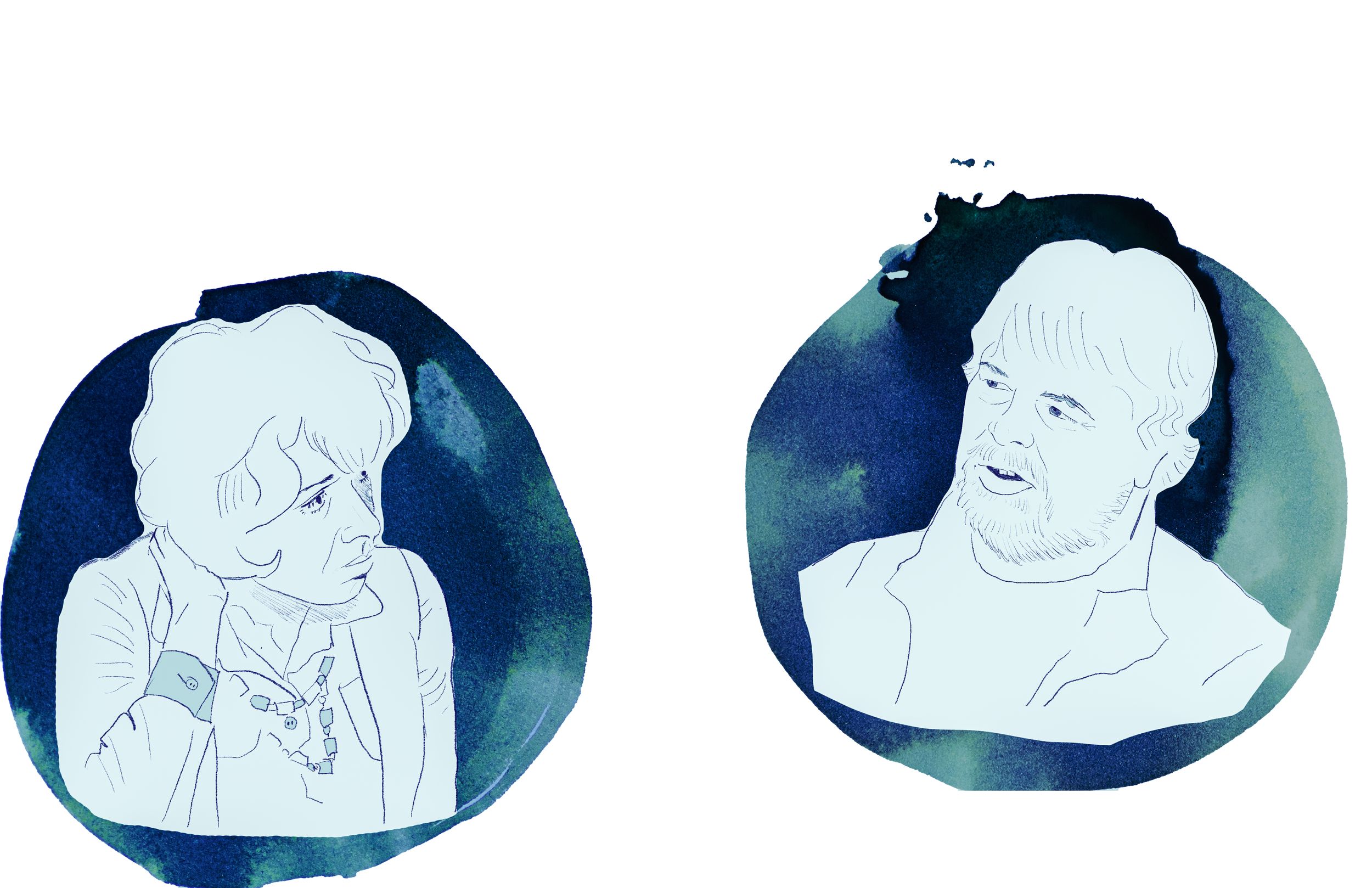


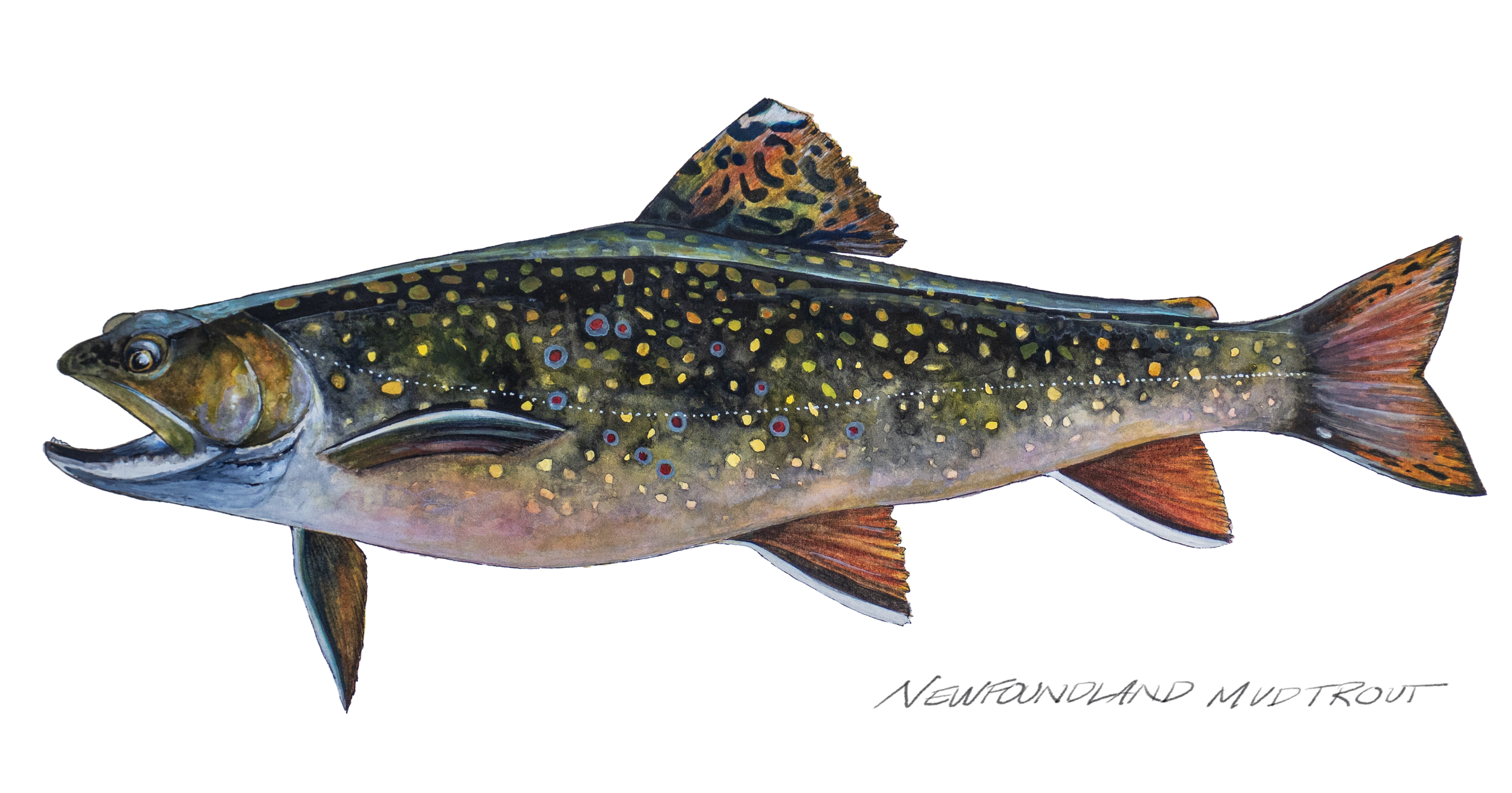
Below, you’ll find earlier stages of my artistic ethnographic work
The top of the page is my most recent work, a two-page spread from my dissertation. My earliest works are shown last. You’ll see I moved from recording my experiences in place with watercolor sketches, something I’ve done since I was a kid, to trying to capture some more human scenes with photos as a guide, to ultimately attempting to visually represent time and multi-species relationships. By portraying this range, it’s my aim to show the development of my analytical “voice” as an ethnographic artist.

a year in salvage - I moved away from these circular representations because I determined that they made these relations appear fixed in time and space, in some ways akin to outmoded anthropological definitions of culture. While I liked undertaking this project and the thinking it entailed, I’m no longer interested in the analytical view from above these circles imply.

"turn with the sun" - I've met fishing people across the North Atlantic who use this phrase to mean that they will only turn their boat to the right, even if it means making multiple right-hand turns to meet their desired heading.

"time for work" - the view out my window at 5am in Fox Harbour, NL, where many rose early to build an oil rig in the nearby town of Argentia. This is one of my favorite early works because of the way the lights in the windows encourage the viewer to imagine the scenes of life, the tiredness, the early cup of coffee taking place inside. Yet, I felt that for my purposes it was too literal -it flattened experience- as a scene life in this place. I painted this from one of my photographs.
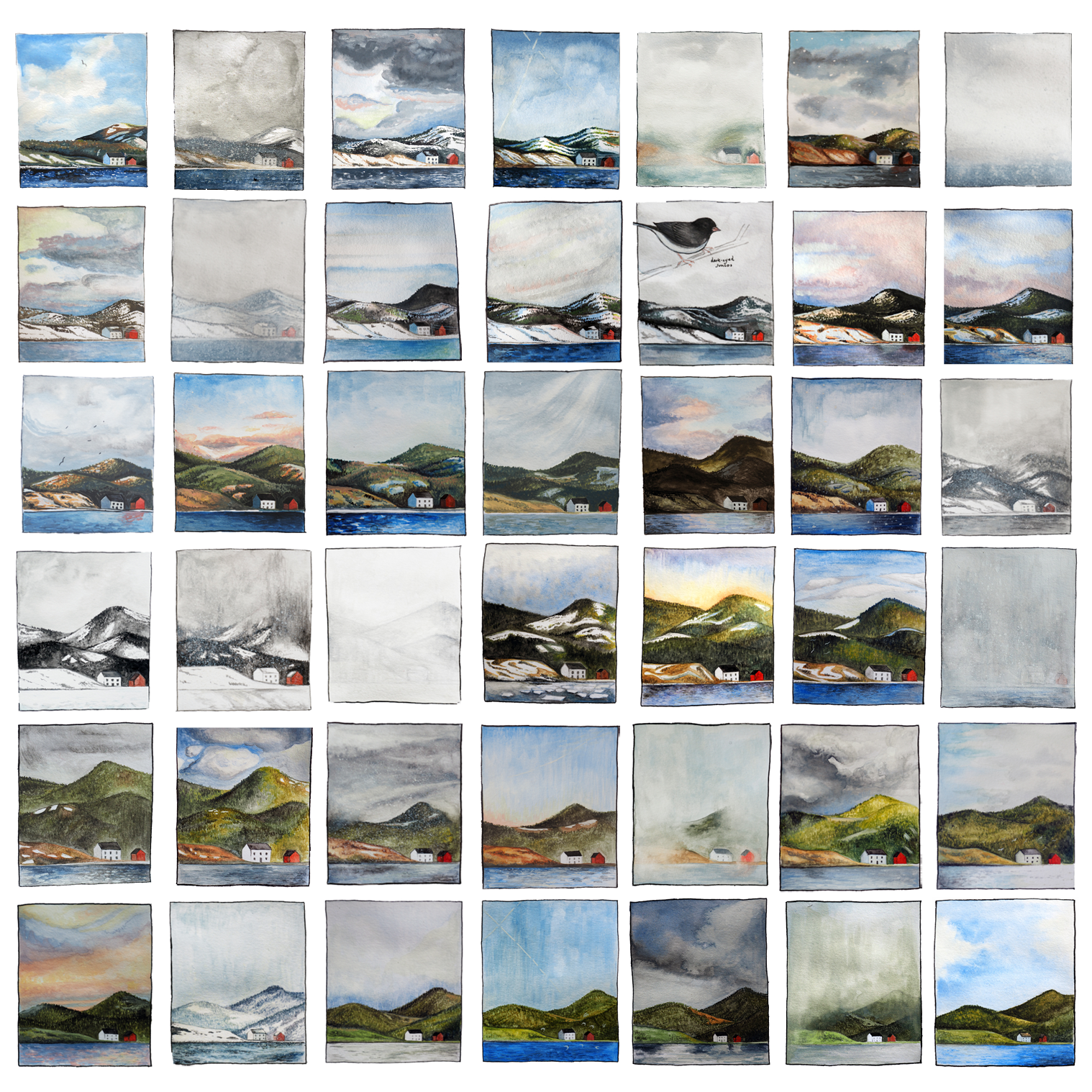
I painted the scene out my window in Salvage, NL as the seasons passed from January (bottom right) to June (top left). I like how this represents the change of the seasons and the weather, which is a major daily force of life in rural places. Yet, people and how they live with this changing weather is largely absent from these images.
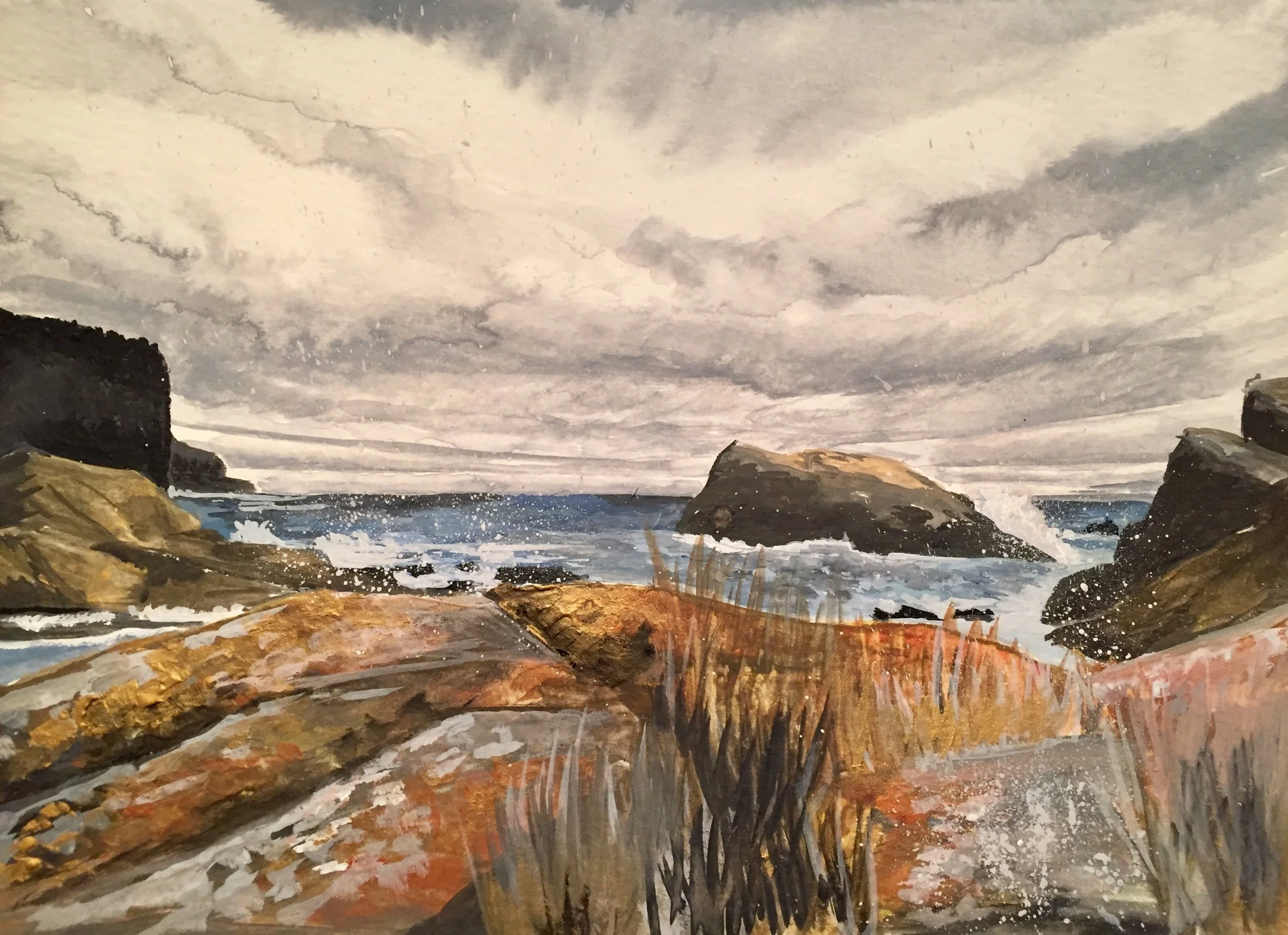
motion rocks in winter - I painted this scene from one of my photographs
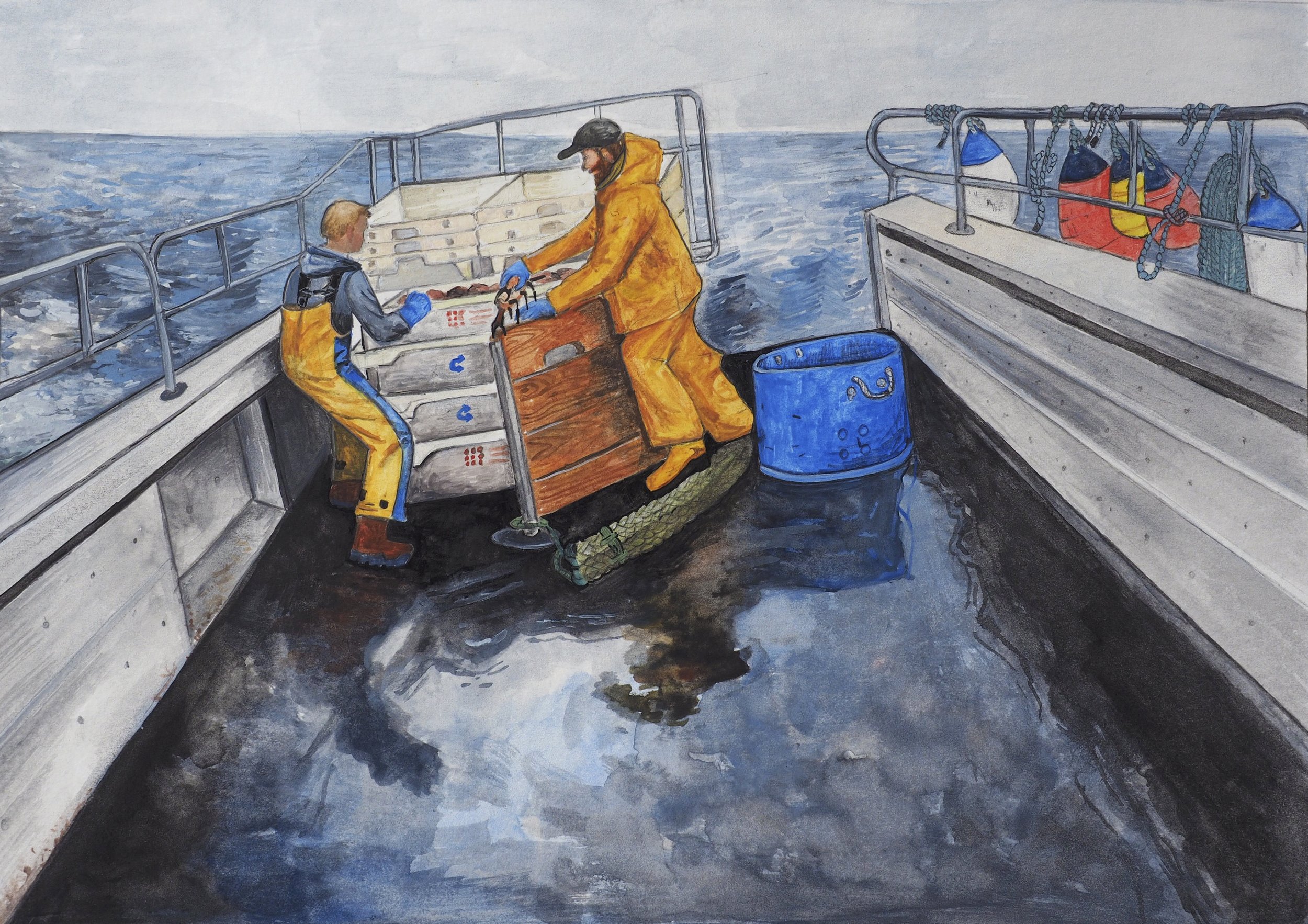
crab fishing in shetland - I painted this scene from one of my photographs. While I was pleased with some of the way I was able to portray light and water, especially on the slick deck of the fishing boat, I felt it was not successful in evoking the shifting relationships I witnessed and participated in during this day at sea.

I painted this scene from life

I painted this scene from life. There are ways in which I have returned to this sketchy style in my recent work. I find it more dynamic and interesting in the ways it explicitly shows an artist (me) interacting with a place more than my increasingly literal attempts to capture a scene. These latter attempts might be more technically "good," but to me they are also more flat. They leave less room for imagination and engagement.


